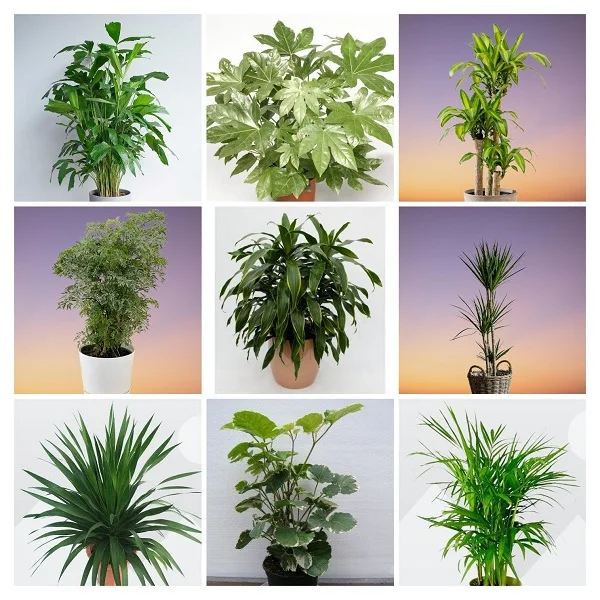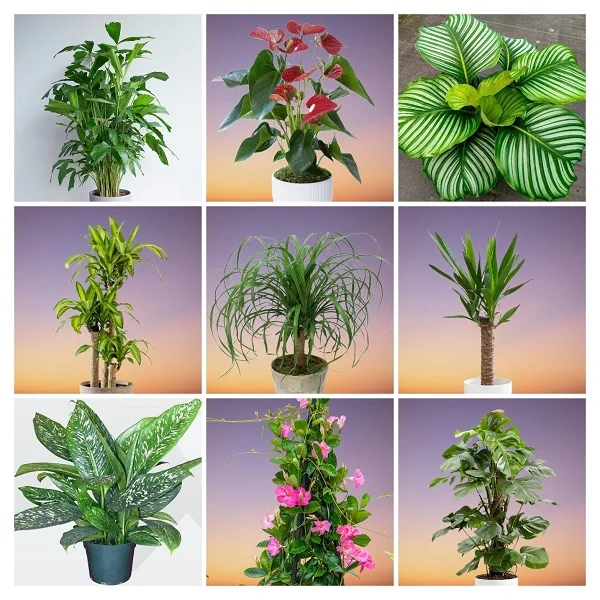Aralia Plants (Polyscias) Indoor Care, Propagation, Common Problems and Remedies
Some links in this post may be affiliate links
Polyscias (Aralia) grows best in bright light, average warmth, moderate humidity and moderately moist, rich, well-drained soils coupled with monthly feeding in the growing season.
Before we jump into the care routine, let’s get familiar with this versatile and beautiful houseplant.
Aralia Plants are popular tree-like plants on account of their attractive foliage and ability to adapt to a wide range of growing conditions.
Polyscias Aralia care; good light, even moisture at the roots and frequent misting of leaves in dry weather. They are distinctly unhappy where the atmosphere is dry. If the not given the right conditions, they readily drop their leaves.
The numerous (there are over 100) varieties of Polyscias are oriental trees with attractive foliage and are grown with twisted stems. The leaves are usually ferny.
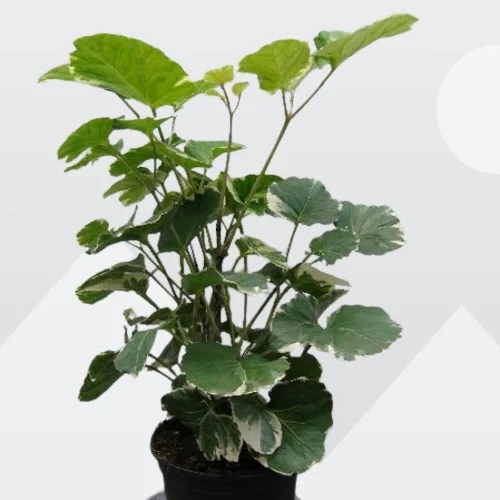
Botanical name: Polyscias
Family: Araliaceae
Sufamily: Aralioideae
Size
Polyscias can grow to a height of 8 feet in the tropical outdoors. The container grown plants height is controlled through regular pruning of the branch tips which also encourages bushiness.
Flower
In the tropical wild Polyscias will produce a 6 inch long inflorescences but when grown indoors, flowering is unlikely.
Polyscias Varieties
Common types of Aralia Plants for indoor growing are;
1. Polyscias balfouriana commonly called Aralia balfouriana or Dinner Plate Aralia
2. Polyscias scutellaria commonly called Shield Aralia
3. Polyscias fruticosa commonly called Ming Aralia.
Toxicity
Polyscias are toxic to pets as outlined by ASPCA. They contain saponins which if ingested will cause swelling and burning in the mouth and throat, vomiting, diarrhea and abdominal pains.
Where to Buy
Aralia are excellent plants for any plant collection. If you would like to acquire these magnificent plants, they are available online on Amazon (Link to Amazon) and on Etsy (Link to Etsy).
How do you care for Polyscias Aralia indoors?
Aralias are hardy, adaptable plants, but they do have specific needs. With the right balance of light, water, humidity, and pruning, you can enjoy a beautiful, thriving plant for years.
Aralia Plants prosper in bright light, average warmth of 18-240C, humidity of 55-65% and moderately moist, fertile, well-drained, all purpose soils coupled with monthly feeding during the growing season.
Polyscias Plant care also requires regular pruning to keep it neat, promote a bushy, compact growth and rejuvenate growth. Repotting is needed every 2-3 years when it has outgrown its pot as it grows best when pot-bound. Keep reading for more on these growing conditions and how to achieve them.
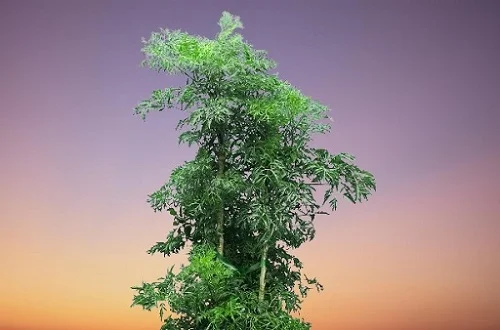
Watering
Water your Polyscias Aralia liberally during the growing season and allow the soil to dry out slightly between waterings. Keep the soil moderately moist but not soggy to avoid yellow leaves.
Water less in the cold season to keep the soil slightly moist as growth is minimal at this time. Never allow the soil to dry out completely as it may cause the plant to drop all its leaves.
Ensure that the pot has a drainage hole to prevent the soil from getting soggy. Aralia do not like to sit in soggy soil which can lead to root-rot and death of the plant.
Light Requirements
Aralia Plants thrive in bright indirect light. However, they will adapt to light shade but will grow much slower.
If the light is too low, the plant may become leggy with small yellowish leaves. Position the plant in a brighter place or use a grow light where the natural lighting is not sufficient.
Though they can tolerate some morning sunshine, keep them away from hot direct sunlight to prevent scorching of the leaves.
Pro tip: Regularly turn the pot to ensure the plant receives light on all sides for uniform growth to prevent lopsided growth.
Temperature and Humidity
Aralia flourish in an average warmth of 18-240C. Keep them away from cold drafts as it doesn't like cold temperature at all. Cold temperatures may result in reduced growth and leaf drop.
Polyscias Aralia will do with a humidity of 55-65%. If the humidity is too low, the plants respond with brown leaf tips and aedges. Therefore, to elevate humidity set the pot on a wet pebble tray or use a cool mist humidifier. Ensure that there is good air circulation to minimize fungal diseases.
Fertilizer
Feed your Aralia monthly during the growing season with a balanced, liquid fertilizer. Take care not to overfertilize to avoid fertilizer burn; brown burnt leaf tips and edges. Do not feed in the cold season as growth is minimal at this time.
Flush out accumulated salts arising from fertilizers every 2-3 months by running a stream of water through the soil until the water comes out through the drainage holes. Let the stream of water run for a few minutes and repeat the process several times.
Potting Mix
The best potting mix for Polyscias Aralia should be a rich, free-draining soil to prevent it from getting soggy while providing the required nutrients. A mix comprosing of 2 parts potting soil, 1 part perlite or sand and 1 part peat moss or coconut coir is ideal for these plants.
Repotting
Repot your Aralia Plants every 2-3 years only when they have outgrown the current pot as they grow best when pot-bound. Use a pot one size larger than the current one. Make sure that the pot has a drainage hole to avoid getting soggy soil which can lead to root-rot. Take a look at these self watering pots on Amazon.
Pruning & Grooming
How to prune an Aralia Plant?
Pruning Polyscias Plants requires:
- Pinching-back of the growing tips to encourage a bushy and compact growth.
- Removal of yellow and dead leaves to keep the plant neat and discourage pest and disease infestations.
- Cutting back the overgrown plant with a clean pair of pruning scissors to rejuvenate growth.
- Regular cleaning of the leaves of the wide-leaved Polyscias by damp wiping them with a soft cloth to get rid of dust and reduce pest infestation.
Pro tip: Use a clean, sharp pair of pruning scissors to avoid transmitting diseases from plant to plant.
Propagation
Can you grow Aralia from cuttings?
Polyscias Aralia propagation is done from stem cuttings at the beginning of the growing season when the plant is actively growing.
How to propagate Polyscias Aralia from stem cuttings
Propagation by stem cuttings is an easy, beginner-friendly method. Polyscias Aralia stem cuttings can be rooted either in water or in soil.
1. Propagating Polyscias Aralia from stem cuttings in water
- Take 4-6 inches stem cuttings from a healthy Aralia Plant. Make sure that each cutting has at least two leaf nodes.
- Remove most bottom of the bottom leaves from the cutting. Retain at least 2-4 leaves at the top.
- Dip the lower cut end of the cutting in a rooting hormone to encourage rooting.
- Place the cuttings in a jar of plain water or in a propagation station.
- Cover the set up with a plastic bag or a humidity dome to enhance rooting.
- Position the set up in a brightly-lit spot away from direct sunlight and change the water every 5-7 days.
- When the roots are about 2-3 inches, transfer the rooted cuttings into individual pots in moist, well-drained soil.
- Keep the soil slightly moist until the new plants are well established after which you can begin routine care.
2. Propagating Polyscias Aralia from stem cuttings in soil
- Take 4-6 inches stem cuttings from a healthy plant. Ensure each has at least two leaf nodes.
- Strip off the lower leaves from the stem cutting. Retain at least 2-4 leaves at the top.
- Fill small pots (about 6-8 inches wide) with a sandy rooting soil and moisten it lightly.
- Dip the lower cut end of the cutting in a rooting hormone to hasten rooting.
- Carefully, insert 2-3 inches of the lower cut end of the cutting into the moist sandy soil.
- Cover the pots with clear plastic bag to create a humid atmosphere which enhances root development.
- Place the set up in a warm (21-270C), well-lit spot away from direct sunlight to avoid cooking the cuttings.
- Note: Aralia stem cuttings and newly propagated plants rot easily at the base and in the roots therefore do not mist the leaves and maintain the soil moist but not wet.
- The cuttings will begin to root in 4-6 weeks. You will know the cutting has rooted when you see new growth.
- Once rooting has taken place, gradually phase out the plastic bag covers.
- Do not transplant the new plants as Polyscias do not like to be disturbed. It is advisable to start the cuttings in pots with adequate room for the young plants.
Pro tip: For a fuller plant, transfer several cuttings into one pot.
Related content: How to propagate Polyscias fruticosa (Ming Aralia) in 3 Easy Ways.
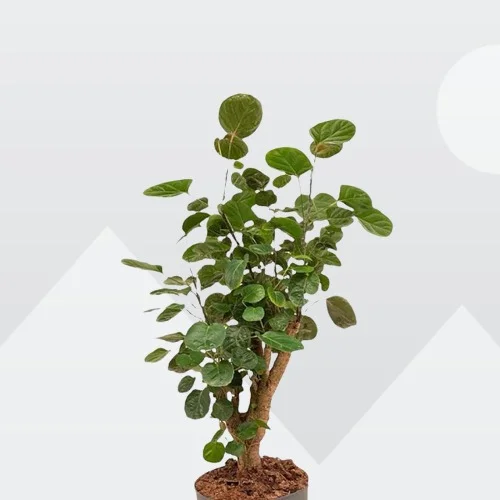
Aralia Plant Problems with Fixes
Aralia Plants (Polyscias) problems include plant dying, yellow leaves, falling leaves, brown leaves, pests and diseases among others. Keep reading for more on these problems, their remedies and solutions.
Why is my Polyscias Aralia dying?
Your Polyscias Aralia is dying due to root-rot which is prevalent in soggy soil.
How do you revive an Aralia Plant?
- Carefully, remove the plant from its pot, clean off the soil from the roots and inspect the roots.
- Cut away brown-black mushy roots and treat the remaining roots with a fungicidal solution.
- Clean and disinfect the pot with the fungicidal solution and repot the plant in fresh soil. Keep it dry for a few days before beginning the regular watering.
- Make sure that the soil is well-draining and the pot has a drainage hole to avoid getting soggy soil.
- Always allow the soil to dry out slightly between waterings.
Why are the leaves of my Aralia Plant turning yellowing?
The leaves of your Aralia plant are turning yellow due to overwatering coupled with soggy soil, underwatering, overfertilizing, pests infestation, hot temperatures among others.
- Overwatering: Water only when the top 1-2 inches of soil dry out. Do not water on a schedule.
- Underwatering: Maintain the soil moderately moist and never allow the soil to dry out completely.
- Soggy soil: Use a pot with a drainage hole and soil that drains easily.
- Overfertilizing: Avoid overfeeding; feertilize monthly during the growing period (spring and summer) only.
- Pests infestation: Regularly check underneath the leaves for pests and keep the plant well pruned to discourage pests.
- Hot temperatures: Keep the plant away from hot drafts from hot stoves, AC units and others to prevent extremely high temperatures.
Check out these 15 causes of yellow leaves in indoor plants and how to fix them
Why are my Aralia leaves falling off?
Some leaf drop in Aralia Plants is normal. However, excessive leaf fall is due to sudden changes in lighting, watering and temperatures.
- Do not change the growing conditions before acclimating the plant; do so gradually over a period of time.
- Position the plant infront of a brightly-lit window or use a grow light is the natural light is not enough.
- Water consistently; when the top soil dries out.
- Do not expose the plant to drafts from AC units, heat sources, windy doors and other to avoid temperature flactuations.
Why is my Aralia turning brown?
Your Aralia is turning brown due to overwatering, underwatering, exposure to hot sunshine, temperature stress, and overfeeding.
- Overwatering: Water the plant when the top 1-2 inches of soil dry and maintain the soil moderately moist.
- Underwatering: Do not allow the soil-ball to dry out completely.
- Exposure to hot sunshine: Though the plant can tolerate some sunshine, keep it way from hot midday sun to avoid scorching.
- Temperature stress: Keep the plant away from drafts to avoid extreme temperatures; either too hot or too cold.
- Overfeeding: Do not overfertilize; feed monthly in the growing season.
Take a look at these 11 causes of brown leaves on houseplants with solutions & prevention measures.
Yellowish-green young leaves
Yellowish-green young leaves in your Aralia Plant are caused by lack of nutrients due to poor feeding. Feed monthly during the growing season with a balanced, liquid fertilizer but do not feed in the cold season as growth is minimal at this time.
The soil needs to be regularly flushed out of accumulated fertilizer deposits by running a stream of water through the soil for some time and repeating the process several times.
Pests
The common pests in Aralia are spider mites especially in low humidity or with underwatering. Isolate the affected plant and treat with an insecticidal soap or neem oil. Ensure to follow the directions on the label.
To discourage future pest infestation, increase the humidity; set the pot on a wet pebble tray or use a cool mist humidifier. Maintain the soil moderately moist and never allow the soil to dry out completely to discourage pest infestation.
Conclusion
If you are looking for a low-maintenance, tropical houseplant, Aralia (Polyscias) is an excellent choice. With its graceful foliage and upright growth, it makes a striking indoor plant. Keep your Aralia happy by balancing light, water, and humidity; these three factors make all the difference.
Frequently Asked Questions
1. Does Polyscias Aralia need sunlight?
Polyscias Aralia can survive some morning sunlight, but too hot direct sunshine may scorch the leaves.
2. How often should I water Polyscias?
Water Polyscias when the top 1-2 inches of soil dry out. Do not water on a schedule.
3. How do I make Aralia bushy?
You can make Aralia bushy by pinching-off the growing tips and by cutting back the leggy stems at the beginning of the growing season (spring).
4. How do you propagate Polyscias?
Polyscias are propagated from stem cuttings during the growing season (spring and summer) when the plant is actively growing.
You liked it? Share on social media.
Related Content
Amazon Associates Disclosure
Homeplantsguide.com is a participant in the Amazon Services LLC Associates Program, an affiliate advertising program designed to provide a means for sites to earn advertising fees by advertising and linking to amazon.com.



